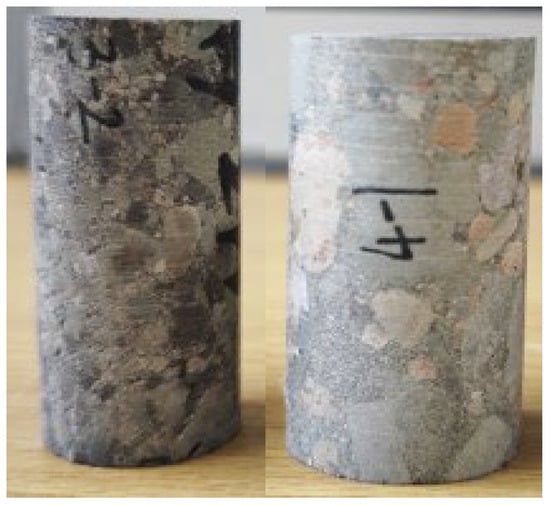Journal Description
Fuels
Fuels
is an international, peer-reviewed, open access journal on fuel science, published quarterly online by MDPI. The Institute of Energy and Fuel Processing Technology (ITPE) is affiliated to Fuels and their members receive a discount on the article processing charges.
- Open Access— free for readers, with article processing charges (APC) paid by authors or their institutions.
- High Visibility: indexed within ESCI (Web of Science), EBSCO, Ei Compendex, and other databases.
- Rapid Publication: manuscripts are peer-reviewed and a first decision is provided to authors approximately 24.7 days after submission; acceptance to publication is undertaken in 8.8 days (median values for papers published in this journal in the first half of 2025).
- Recognition of Reviewers: APC discount vouchers, optional signed peer review, and reviewer names published annually in the journal.
- Journal Cluster of Energy and Fuels: Energies, Batteries, Hydrogen, Biomass, Electricity, Wind, Fuels, Gases, Solar, ESA and Methane.
Impact Factor:
2.8 (2024);
5-Year Impact Factor:
3.1 (2024)
Latest Articles
Mechanistic Evaluation of Surfactant-Enhanced Oil Mobility in Tight Conglomerate Reservoirs: A Case Study of Mahu Oilfield, NW China
Fuels 2025, 6(4), 93; https://doi.org/10.3390/fuels6040093 - 12 Dec 2025
Abstract
►
Show Figures
To address the challenges of strong heterogeneity and poor crude oil mobility in tight conglomerate reservoirs of the Mahu Oilfield, this study systematically evaluated the effects of different surfactants on wettability alteration, spontaneous imbibition, and relative permeability through high-temperature/high-pressure spontaneous imbibition experiments, online
[...] Read more.
To address the challenges of strong heterogeneity and poor crude oil mobility in tight conglomerate reservoirs of the Mahu Oilfield, this study systematically evaluated the effects of different surfactants on wettability alteration, spontaneous imbibition, and relative permeability through high-temperature/high-pressure spontaneous imbibition experiments, online Nuclear Magnetic Resonance (NMR) monitoring, and relative permeability measurements. Core samples from the Jinlong and Madong areas (porosity: 5.98–17.55%; permeability: 0.005–0.148 mD) were characterized alongside X-Ray Diffraction (XRD) data (clay mineral content: 22–35.7%) to compare the performance of anionic, cationic, nonionic, and biosurfactants. The results indicated that the nonionic surfactant AEO-2 (Fatty Alcohol Polyoxyethylene Ether) (0.2% concentration) at 80 °C exhibited optimal performance, achieving the following results: 1. a reduction in wettability contact angles by 80–90° (transitioning from oil-wet to water-wet); 2. a decrease in interfacial tension to 0.64 mN/m; 3. an imbibition recovery rate of 40.14%—5 to 10 percentage points higher than conventional fracturing fluids. NMR data revealed that nanopores (<50 nm) contributed 75.36% of the total recovery, serving as the primary channels for oil mobilization. Relative permeability tests confirmed that AEO-2 reduced residual oil saturation by 6.21–6.38%, significantly improving fluid flow in highly heterogeneous reservoirs. Mechanistic analysis highlighted that the synergy between wettability reversal and interfacial tension reduction was the key driver of recovery enhancement. This study provides a theoretical foundation and practical solutions for the efficient development of tight conglomerate reservoirs.
Full article
Open AccessArticle
Evaluating Techno-Economic Feasibility of Green Hydrogen Production Integrated with a Wave Energy Converter Device
by
Sagar Kansara, Kourosh Rezanejad, Mohammad Jahanbakht and Diogo M. F. Santos
Fuels 2025, 6(4), 92; https://doi.org/10.3390/fuels6040092 - 4 Dec 2025
Abstract
The urgent need to address climate change has driven the exploration of sustainable energy solutions, with wave energy and green hydrogen emerging as prominent alternatives to traditional fossil fuels. This study examines the potential synergy between wave energy and hydrogen production, with a
[...] Read more.
The urgent need to address climate change has driven the exploration of sustainable energy solutions, with wave energy and green hydrogen emerging as prominent alternatives to traditional fossil fuels. This study examines the potential synergy between wave energy and hydrogen production, with a focus on the economic viability of integrating these technologies. Through a detailed analysis of the levelised cost of electricity (LCOE) and the levelised cost of hydrogen (LCOH), this paper examines how coastal regions in Portugal and across Western Europe can harness wave energy to produce green hydrogen, a crucial component in the global energy transition. The techno-economic assessment accounts for capital and operational costs, energy efficiency, and lifetime performance to determine how design and location affect economic feasibility. Preliminary analysis indicates that regions with significant wave power potential present opportunities for competitive LCOE values, with some coastal areas achieving LCOE figures as low as 0.10 €/kWh. Additionally, the LCOH analysis reveals that among various storage methods, compressed gas hydrogen at 350 bar stands out as the most cost-effective option. This research highlights the transformative potential of wave energy-driven hydrogen production as a crucial solution for decarbonising the maritime sector. Future technological advancements and cost efficiencies are poised to overcome current economic barriers and accelerate the transition to a sustainable, low-carbon energy landscape.
Full article
(This article belongs to the Topic Hydrogen Energy Technologies, 3rd Edition)
►▼
Show Figures

Figure 1
Open AccessArticle
Numerical Simulation Data Versus PIV Measurement Data for a Hydrogen-Fueled Afterburner System
by
Andreea Cristina Mangra, Florin Gabriel Florean and Cristian Carlanescu
Fuels 2025, 6(4), 91; https://doi.org/10.3390/fuels6040091 - 4 Dec 2025
Abstract
►▼
Show Figures
The global concern regarding the reduction of carbon emissions has led to the development of hydrogen as a clean, carbon-free fuel for combustion systems. The present work combines Particle Image Velocimetry flow field measurements and Reynolds-Averaged Navier–Stokes numerical simulations to investigate the reactive
[...] Read more.
The global concern regarding the reduction of carbon emissions has led to the development of hydrogen as a clean, carbon-free fuel for combustion systems. The present work combines Particle Image Velocimetry flow field measurements and Reynolds-Averaged Navier–Stokes numerical simulations to investigate the reactive flow downstream of a newly developed flame holder as part of a hydrogen-fueled afterburner system. The obtained numerical results are in reasonable agreement, for a RANS simulation, with the PIV measured data. According to the results presented in this article, it can be seen that ignition occurs, the flame is attached to the flame holder, and vortices develop downstream of the flame holder. These vortices facilitate the mixing of hydrogen with the flue gas coming from the gas generator. The recirculation zone generated by the flame holder in the flow measures approximately 100 mm, with the peak negative velocity reaching around 10 m/s. Downstream of the recirculation zone, the far-field free stream velocity on the centerline reaches 20 m/s. Outside the recirculation region, in the radial direction, the free stream is accelerated to an experimentally measured value of approximately 40 m/s, at 20 mm downstream from the flame holder, and 35 m/s at 100 mm downstream of the flame holder. The information gathered thus far will aid further investigation of the presented hydrogen-fueled afterburner system.
Full article

Figure 1
Open AccessReview
Ricinus communis as a Sustainable Alternative for Biodiesel Production: A Review
by
Miriam Martínez-González, Miguel Angel Ramos-López, Ana L. Villagómez-Aranda, José Alberto Rodríguez-Morales, Juan Campos-Guillén, Karla Elizabeth Mariscal-Ureta, Aldo Amaro-Reyes, Juan Antonio Valencia-Hernández, Diana Saenz de la O and Carlos Eduardo Zavala-Gómez
Fuels 2025, 6(4), 90; https://doi.org/10.3390/fuels6040090 - 2 Dec 2025
Abstract
The current rise in global energy demand and environmental degradation has highlighted the need to use renewable energy as an alternative to fossil fuels. Ricinus communis L. (castor bean oil) has emerged as a promising source for biofuels production due to high oil
[...] Read more.
The current rise in global energy demand and environmental degradation has highlighted the need to use renewable energy as an alternative to fossil fuels. Ricinus communis L. (castor bean oil) has emerged as a promising source for biofuels production due to high oil content (45–55%), ability to grow on marginal soils, and resistance to adverse conditions. This review analyzes 93 relevant studies from 2019 to 2025, selected by the PRISMA method (Preferred Reporting Items for Systematic reviews and Meta-Analyses) from databases such as Google Scholar and Web of Science. There were identified that agronomic techniques such as optimized plant spacing, balanced fertilization, and elicitation can significantly increase productivity. Among the production methods used, heterogeneous catalysis (96.8%) and enzymatic processes (90%) stand up for their sustainability and efficiency. However, the main limitation remains the high viscosity of castor biodiesel (14–18 mm2/s at 40 °C), which exceeds international quality standards. Even so, castor biodiesel offers excellent lubricity (reduces injection wear by 20%), has standard oxidative stability, and has a relatively low cetane number (38–42), which poses challenges for ignition quality. Improvement strategies such as blending, enzymatic modification, and additive incorporation have shown potential to mitigate these limitations. The review also addresses environmental benefits, regulatory challenges, and market opportunities where the castor biodiesel offers competitive advantages. Enhancing research and innovation, supported by targeted public policies and technical standards, is essential to overcome current barriers and enable the commercial adoption of castor biodiesel as part of a more sustainable and diversified energy future.
Full article
(This article belongs to the Special Issue Biomass Conversion to Biofuels: 2nd Edition)
►▼
Show Figures

Figure 1
Open AccessArticle
Influence of CA-Modified Hβ on Methane-Assisted Hydroconversion of Polycyclic Aromatics to Monocyclic Aromatics
by
Zhibing Shen, Ruiyuan Tang, Shengrong Liang, Juntao Zhang, Leyuan Li and Shangli Zhang
Fuels 2025, 6(4), 89; https://doi.org/10.3390/fuels6040089 - 26 Nov 2025
Abstract
►▼
Show Figures
The conversion of polycyclic aromatic hydrocarbons (PAHs) to monocyclic aromatic hydrocarbons holds significant importance in the petrochemical and coal chemical industries, as it enables the production of high-value-added chemicals. In this study, we investigated the methane-assisted hydroconversion of PAHs to monocyclic aromatic hydrocarbons
[...] Read more.
The conversion of polycyclic aromatic hydrocarbons (PAHs) to monocyclic aromatic hydrocarbons holds significant importance in the petrochemical and coal chemical industries, as it enables the production of high-value-added chemicals. In this study, we investigated the methane-assisted hydroconversion of PAHs to monocyclic aromatic hydrocarbons with methyl side chains over Zn-based catalysts from Hβ zeolites treated with citric acid (CA) at different concentrations. The CA-modified Hβ catalysts were characterized using X-ray diffraction (XRD), N2 adsorption–desorption, pyridine–Fourier transform infrared spectroscopy (Py-FTIR), and ammonia temperature-programmed desorption (NH3-TPD). The results show that low CA concentrations facilitate the removal of amorphous aluminum from the zeolite framework, thereby increasing the specific surface area, pore volume, and pore diameter of the Zn/Hβ catalyst, as well as improving its Lewis/Brønsted (L/B) acid ratio. In contrast, excessive CA treatment causes the undesirable removal of framework aluminum and leads to structural collapse in the mesoporous regions formed at the interfaces between certain crystal aggregates. This, in turn, has a negative impact on the catalyst’s specific surface area, pore volume, pore size distribution, total acidity, and L/B ratio. Experimental data further indicate that the optimal Zn/Hβ catalyst, prepared using Hβ treated with 0.08 M CA, achieves a naphthalene conversion rate of up to 99% and a benzene–toluene–xylene (BTX) selectivity of 60% in the liquid product over a 10 h reaction period. These findings confirm that CA treatment not only enhances the catalytic activity of Zn/Hβ but also significantly improves its operational stability. This work provides new insights into the rational design of catalysts for the efficient conversion of PAHs to monocyclic aromatic hydrocarbons and the utilization of methane resources.
Full article
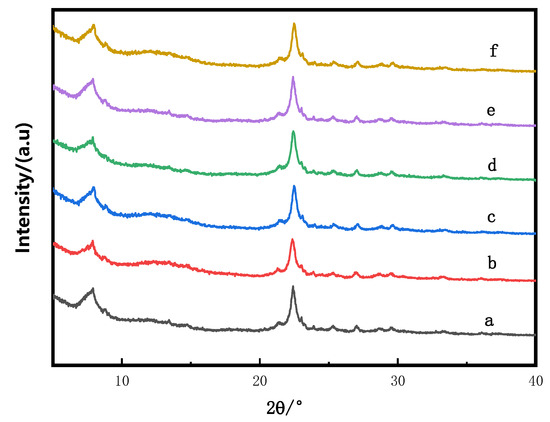
Figure 1
Open AccessArticle
A Global Review of Blue and Green Hydrogen Fuel Production Technologies, Trends and Future Outlook to 2050
by
Muhammad Ammar, Babatunde Oyeleke Oyewale, Ahmed Elseragy, Ibrahim M. Albayati and Aliyu M. Aliyu
Fuels 2025, 6(4), 88; https://doi.org/10.3390/fuels6040088 - 26 Nov 2025
Abstract
►▼
Show Figures
Hydrogen is emerging as a key energy carrier in the transition to a low-carbon economy. This study reviews blue and green hydrogen, analysing their production technologies, environmental impacts, economic viability and global deployment trends. Blue hydrogen, derived from natural gas, coal or biomass
[...] Read more.
Hydrogen is emerging as a key energy carrier in the transition to a low-carbon economy. This study reviews blue and green hydrogen, analysing their production technologies, environmental impacts, economic viability and global deployment trends. Blue hydrogen, derived from natural gas, coal or biomass with carbon capture, utilisation and storage, offers a transitional pathway by reducing emissions relative to unabated fossil routes, but its benefits depend on high CO2 capture efficiencies and strict methane leakage control. Green hydrogen, produced via renewable-powered electrolysis and advanced thermochemical, photochemical and photoelectrochemical methods, represents the most sustainable long-term solution, though it is currently limited by cost and scale. This comparative assessment shows that green hydrogen’s production emissions, in the range of 0.67 kgCO-eq/kgH to 1.74 kgCO2-eq/kgH2, are substantially lower than those of blue hydrogen, in the range of 1.21 kgCO2-eq/kgH2 to 4.56 kgCO2-eq/kgH2, reinforcing its alignment with climate neutrality goals. Global production remains below 1% from low-emission sources, yet momentum is growing, with renewable-rich regions investing in large-scale electrolysers. A long short-term memory forecast suggests that blue hydrogen will dominate in the short term, but green hydrogen will surpass it around 2042. Together, both pathways are essential, blue hydrogen as a bridging option and green hydrogen as the foundation of a sustainable hydrogen economy.
Full article

Figure 1
Open AccessArticle
Effects of Calcination Time and Sulfonation on Silica Particles Synthesised Using the Stober and Sol–Gel Methods for Fuel Cell Applications
by
Livhuwani Modau, Charles Muzenda, Tebogo Mashola, Touhami Mokrani, Rudzani Sigwadi and Fulufhelo Nemavhola
Fuels 2025, 6(4), 87; https://doi.org/10.3390/fuels6040087 - 25 Nov 2025
Abstract
►▼
Show Figures
SiO2 is a versatile inorganic substance with a wide spectrum of applications in areas such as fuel cells. In this study, pristine (p-SiO2) and sulfonated silica (s-SiO2) particles were synthesised using the sol–gel and Stober methods. Furthermore, this
[...] Read more.
SiO2 is a versatile inorganic substance with a wide spectrum of applications in areas such as fuel cells. In this study, pristine (p-SiO2) and sulfonated silica (s-SiO2) particles were synthesised using the sol–gel and Stober methods. Furthermore, this study investigated the impact of calcination time and surface changes on the morphology, and hence functionality, of silica particles synthesised as potential fuel cell membrane additives. Tetraethyl orthosilicate (TEOS) was used as a silica precursor dissolved in water, with sulfuric acid serving as the sulfonation agent. Parametric data on particle morphology, such as particle size, porosity, total surface area, and agglomeration, were measured and evaluated using BET, Fourier-transform infrared (FTIR), X-ray diffraction (XRD), and scanning electron microscopy (SEM). The amorphous nature of silica particles was confirmed by XRD analysis. The BET outcome data acquired for the synthesised silica particles were a surface area ranging from 271 to 487 m2/g, a pore diameter of 12.10–21.02 nm, and a total pore volume of 0.76–1.58 cm3/g. These data give crucial characteristics for designing appropriate silica nanofillers for hybrid fuel cell membranes. As a result, the data gathered can be used to make future decisions about silica synthesis methods for various specific applications, such as fuel cell applications.
Full article
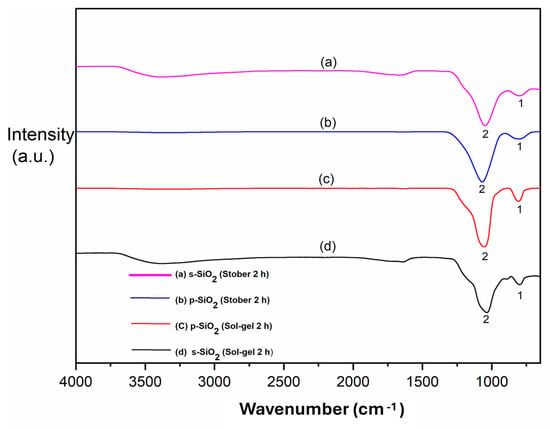
Figure 1
Open AccessReview
Harnessing Mechanical Force for Greenhouse Gas Conversion: A Mini-Review on Mechanochemistry in the Dry Reforming of Methane
by
Abdulwahab Saad, Kehinde Temitope Alao, Idris Temitope Bello, Fawziyah Oyefunke Olarinoye and Abdulhammed K. Hamzat
Fuels 2025, 6(4), 86; https://doi.org/10.3390/fuels6040086 - 21 Nov 2025
Abstract
►▼
Show Figures
Dry reforming of methane (DRM) is a promising method for turning two major greenhouse gases, CO2 and CH4, into syngas (H2 + CO). This syngas has the right H2/CO ratio for making valuable chemicals and liquid fuels.
[...] Read more.
Dry reforming of methane (DRM) is a promising method for turning two major greenhouse gases, CO2 and CH4, into syngas (H2 + CO). This syngas has the right H2/CO ratio for making valuable chemicals and liquid fuels. However, there are significant challenges that make it tough to implement commercially. One big issue is that the process requires a lot of energy because it is highly endothermic, needing temperatures over 700 °C. This high heat can quickly deactivate the catalyst due to carbon build-up (coking) and the thermal sintering of metal nanoparticles. Researchers increasingly recognize mechanochemistry—a non-thermal, solid-state technique employing mechanical force to drive chemical transformations—as a sustainable, solvent-free strategy to address these DRM challenges. This mini-review critically assesses the dual role of mechanochemistry in advancing DRM. First, we examine its established role in creating advanced catalysts at lower temperatures. Here, mechanochemical methods help produce well-dispersed nanoparticles, enhance strong interactions between metal and support, and develop bimetallic alloys that resist coke formation and show great stability. Second, we delve into the exciting possibility of using mechanochemistry to directly engage in the DRM reaction at near-ambient temperatures, which marks a major shift from traditional thermocatalysis. Lastly, we discuss the key challenges ahead, like scalability and understanding the mechanisms involved, while also outlining future directions for research to fully harness mechanochemistry for converting greenhouse gases sustainably.
Full article

Figure 1
Open AccessArticle
Multi-Objective Optimization of Grid Mix Scenarios for Green Hydrogen Production in Germany: Balancing Environmental Impact and Energy Costs
by
Shreyas Mysore Guruprasad, Yajing Chen, Ann-Katrin Müller, Gabriel Sultan and Agnetha Flore
Fuels 2025, 6(4), 85; https://doi.org/10.3390/fuels6040085 - 21 Nov 2025
Abstract
As global decarbonization accelerates, the environmental and economic viability of hydrogen production largely depends on the evolving electricity supply mix. This study focused on alkaline water electrolysis (AWE) to identify the key factors affecting the competitiveness of green hydrogen. In this study, the
[...] Read more.
As global decarbonization accelerates, the environmental and economic viability of hydrogen production largely depends on the evolving electricity supply mix. This study focused on alkaline water electrolysis (AWE) to identify the key factors affecting the competitiveness of green hydrogen. In this study, the temporal dynamics of grid transformation in Germany and the EU over a 20-year period (2025–2045) were addressed by developing a multi-objective optimization framework that integrates environmental impact analysis with machine-learning surrogate models to evaluate trade-offs between the carbon footprint and energy cost per kilogram of hydrogen. Grid-mix scenarios were generated via constrained Latin Hypercube Sampling under policy constraints, including coal phase-out and ≥80% renewables, screened for Pareto optimality, and clustered into distinct archetypes. The results indicated that cost-effective, low-carbon hydrogen production can be achieved through balanced portfolios that emphasize hydropower, biomass, and solar energy. Scenarios that minimize energy costs alone tend to breach environmental targets, whereas ultra-low-emission paths incur steep energy cost penalties. A representative scenario for 2034 (GWP = 24.57 kg CO2-eq/kg H2; Energy Cost = 9.47 €/kg H2) demonstrated a realistic synergy between policy constraints, cost, and environmental impact.
Full article
(This article belongs to the Special Issue Sustainability Assessment of Renewable Fuels Production)
►▼
Show Figures
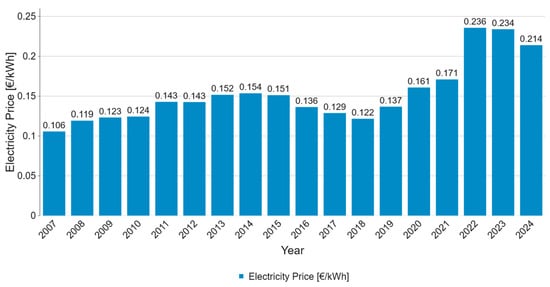
Figure 1
Open AccessReview
Integrated Techno-Economic and Environmental Assessment of U-Shaped (Horseshoe) Well Technology for Enhanced Recovery in Unconventional Shale and Tight Reservoirs
by
Habib Ouadi, Olusegun Stanley Tomomewo, Yahia Zakaria Benkhira, Gizem Yildirim, Aimen Laalam and Abderrahmane Mellak
Fuels 2025, 6(4), 84; https://doi.org/10.3390/fuels6040084 - 18 Nov 2025
Abstract
►▼
Show Figures
The development of unconventional resources continues to be propelled by innovations that enhance economic efficiency and maximize reservoir contact within operational constraints. Among the most recent of these is the U-shaped, or “horseshoe,” well design, which connects two parallel horizontal laterals with a
[...] Read more.
The development of unconventional resources continues to be propelled by innovations that enhance economic efficiency and maximize reservoir contact within operational constraints. Among the most recent of these is the U-shaped, or “horseshoe,” well design, which connects two parallel horizontal laterals with a 180° turn, effectively doubling the reservoir exposure from a single wellhead. This paper provides a comprehensive literature review of the current state of knowledge on U-shaped well technology. It surveys the operational drivers for their adoption, the critical drilling, and completion technologies that have enabled its successful implementation and discusses key design considerations for a successful operation. Field data from major North American shale basins, including the Permian, Eagle Ford, Bakken, and Haynesville, demonstrate substantial economic benefits, such as capital cost savings of approximately 20–25% compared to traditional methods. Lifecycle assessments indicate notable environmental advantages, including a 29.3% reduction in carbon emissions, a 15.8% reduction in water use, and a 50% decrease in land disturbance. Despite these clear benefits, gaps remain regarding long-term performance validation, stimulation of curved sections, and fracture modeling accuracy. Addressing these gaps is essential to fully realize the potential of U-shaped wells as a sustainable and economically attractive approach in the evolving landscape of unconventional energy development.
Full article
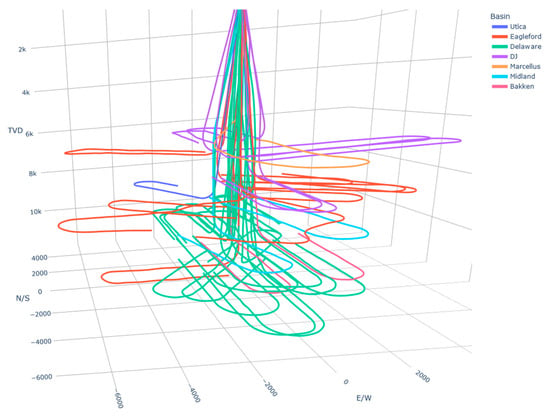
Figure 1
Open AccessArticle
Non-Supported Heteroatom Modification Molybdenum-Based Catalyst for Synthesis Low-Carbon Alcohols from Coal-Based Syngas
by
Peixuan Sun, Ruiyuan Tang, Lixia He, Zhibing Shen, Lingying Wang, Yuanyu Tian and Juntao Zhang
Fuels 2025, 6(4), 83; https://doi.org/10.3390/fuels6040083 - 7 Nov 2025
Abstract
Amid growing concerns over fossil fuel depletion and environmental degradation, developing alternative energy sources is imperative. While MoS2-based catalysts are known for their syngas conversion activity, their selectivity toward alcohols remains limited. This study addresses this gap by developing Cu-promoted MoS
[...] Read more.
Amid growing concerns over fossil fuel depletion and environmental degradation, developing alternative energy sources is imperative. While MoS2-based catalysts are known for their syngas conversion activity, their selectivity toward alcohols remains limited. This study addresses this gap by developing Cu-promoted MoS2 catalysts to enhance alcohol synthesis. The results indicated that the introduction of copper significantly modulates the catalytic performance of MoS2. We demonstrate that incorporating Cu significantly modulates the catalytic properties of MoS2. The optimized catalyst with 9 wt% Cu loading exhibited a CO conversion of 17.9% and a markedly improved total alcohol selectivity of 46.4%, with a space-time yield of 67.6 mg·g−1·h−1. Although Cu addition slightly reduced CO conversion, it markedly improved alcohol selectivity by facilitating active site dispersion, suppressing Fischer-Tropsch side reactions, and stabilizing heteroatomic active phases. Finally, a catalytic mechanism for the synthesis of low-carbon alcohols from syngas on MoS2-based catalysts was proposed based on the catalyst analysis and reaction results.
Full article
(This article belongs to the Special Issue Sustainability Assessment of Renewable Fuels Production)
►▼
Show Figures

Figure 1
Open AccessArticle
Changes in the Operating Conditions of Distribution Gas Networks as a Function of Altitude Conditions and the Proportion of Hydrogen in Transported Natural Gas
by
Krzysztof Kogut, Piotr Narloch, Katarzyna Kapusta and Ewa Zięba
Fuels 2025, 6(4), 82; https://doi.org/10.3390/fuels6040082 - 6 Nov 2025
Abstract
►▼
Show Figures
The article presents a comparison between the pressure conditions of a real low-pressure gas network and the results of hydraulic calculations obtained using various simulation programs and empirical equations. The calculations were performed using specialized gas network analysis software: STANET (ver 10.0.26), SimNet
[...] Read more.
The article presents a comparison between the pressure conditions of a real low-pressure gas network and the results of hydraulic calculations obtained using various simulation programs and empirical equations. The calculations were performed using specialized gas network analysis software: STANET (ver 10.0.26), SimNet SSGas 7, and SONET. Additionally, the simulation results were compared with calculations based on the empirical Darcy–Weisbach and Renouard equations. In the first part of the analysis, two calculation models were compared. In one model, the geodetic elevation of individual network nodes was included (elevation-aware model), while in the second, calculations were performed without considering node elevation (flat model). For low-pressure gas networks, accounting for elevation is critical due to the presence of the pressure recovery phenomenon, which does not occur in medium- and high-pressure networks. Furthermore, considering the growing need to increase the share of renewable energy, the study also examined the network’s operating conditions when using natural gas–hydrogen mixtures. The following hydrogen concentrations were considered: 2.5%, 5.0%, 10.0%, 20.0%, and 50.0%. The results confirm the importance of incorporating elevation data in the modeling of low-pressure gas networks. This is supported by the small differences between calculated results and actual pressure measurements taken from the operating network. Moreover, increasing the hydrogen content in the mixture intensifies the pressure recovery effect. The hydraulic results obtained using different computational tools were consistent and showed only minor discrepancies.
Full article

Figure 1
Open AccessArticle
Polyvinyl Alcohol-Based Binder Systems for Biomass and Charcoal Briquettes
by
Nataliya Korol and Viktor Yankovych
Fuels 2025, 6(4), 81; https://doi.org/10.3390/fuels6040081 - 21 Oct 2025
Abstract
►▼
Show Figures
Biomass briquettes are increasingly used as renewable solid fuels, yet their durability under humid storage remains a key limitation. This study evaluated the mechanical performance and water resistance of briquettes made from fine (0–1 mm) and coarse (0–3 mm) charcoal fractions using molasses
[...] Read more.
Biomass briquettes are increasingly used as renewable solid fuels, yet their durability under humid storage remains a key limitation. This study evaluated the mechanical performance and water resistance of briquettes made from fine (0–1 mm) and coarse (0–3 mm) charcoal fractions using molasses as a primary binder, polyvinyl alcohol (PVA, 3–7%) as a synthetic binder, and liquid soap (1–9%) as a surfactant additive. Compressive strength was measured in the dry state, after four days of water immersion, and after re-drying, while water absorption was monitored over immersion times from 15 min to 4 days. Fine-fraction briquettes showed higher strength and lower water uptake than coarse fractions, with optimal PVA contents of 6–7% providing maximum dry and post-drying strength. Moderate soap addition (2–3%) improved binder dispersion and early wet strength, whereas higher levels (>5%) reduced durability. Water absorption kinetics indicated that particle size controlled early swelling, while binder composition influenced the rate but not the final saturation. The best performance in humid storage was achieved by 0–1 mm + 4% PVA and 0–1 mm + 5% PVA + 3% soap formulations. These results support the formulation of eco-friendly binder systems that balance strength, moisture resistance, and cost for large-scale biomass briquette production.
Full article

Figure 1
Open AccessArticle
Study on the Effect of Sodium Dodecyl Benzene Sulfonate on Coal Moisture Imbibition and Gas Adsorption
by
Kaizhi Li, Yanqi Chen, Zhaofeng Wang, Liguo Wang, Demin Chen, Shujun Ma and Shijie Li
Fuels 2025, 6(4), 80; https://doi.org/10.3390/fuels6040080 - 15 Oct 2025
Abstract
►▼
Show Figures
Coal mining has entered the stage of deep mining, and the prevention and control of gas disasters are facing significant challenges. Coal seam water injection, as an effective means of preventing and controlling gas disasters, has dual effects of pressure relief, permeability enhancement,
[...] Read more.
Coal mining has entered the stage of deep mining, and the prevention and control of gas disasters are facing significant challenges. Coal seam water injection, as an effective means of preventing and controlling gas disasters, has dual effects of pressure relief, permeability enhancement, and displacement sodium dodecyl benzene sulfonate (SDBS), as an anionic surfactant, can reduce surface tension to a certain extent in its aqueous solution and is therefore commonly used in coal seam water injection technology. In order to clarify the effect of SDBS on the water absorption capacity of coal and whether it will affect the gas adsorption capacity of coal, imbibition tests were conducted on dried coal samples in different concentrations of SDBS solutions, as well as gas adsorption tests on dried coal samples after imbibition was completed. Research shows that the key concentration range of SDBS for practical application is 0.050–0.075 wt%. When the concentration of SDBS solution is lower than 0.050 wt%, as the concentration of SDBS solution increases, the spontaneous imbibition capacity of coal increases significantly, and the adsorption capacity of coal to gas decreases significantly. When the concentration of SDBS solution is higher than 0.075 wt%, the spontaneous imbibition water capacity and gas adsorption capacity of coal hardly change significantly with the increase in solution concentration. Considering the effects of SDBS on coal water absorption and gas adsorption capacity, as well as environmental protection factors, it is recommended to use SDBS as a surfactant with a solution concentration of 0.050 wt%.
Full article

Figure 1
Open AccessArticle
Multiscale 3D CFD Modeling of CO2 Methanation over Ni/Al2O3 in a Lab-Scale Sabatier Fixed-Bed Reactor
by
Alexandru-Constantin Bozonc, Vlad-Cristian Sandu, Alexia-Maria Buzila and Ana-Maria Cormos
Fuels 2025, 6(4), 79; https://doi.org/10.3390/fuels6040079 - 14 Oct 2025
Abstract
►▼
Show Figures
A multiscale 3D CFD model of CO2 methanation over Ni/Al2O3 was developed in COMSOL Multiphysics 6.3 for a lab-scale isothermal fixed-bed Sabatier reactor and validated against published data. The multiscale approach integrated bulk convection–diffusion, fluid flow, and pressure distribution
[...] Read more.
A multiscale 3D CFD model of CO2 methanation over Ni/Al2O3 was developed in COMSOL Multiphysics 6.3 for a lab-scale isothermal fixed-bed Sabatier reactor and validated against published data. The multiscale approach integrated bulk convection–diffusion, fluid flow, and pressure distribution with intraparticle diffusion–reaction phenomena coupled with Langmuir–Hinshelwood–Hougen–Watson-based kinetics, thus solving mass-transfer limitations without empirical effectiveness factors. Model validation was carried out by (i) kinetics, (ii) reactor performance, and (iii) hydrodynamics. Simulation results showed strong diffusion-dominated species transport at the bed entrance that lessened downstream as partial pressures decreased and products accumulated, resulting in a diffusion-relieved regime near the outlet. Sensitivity studies identified 320–350 °C and up to 10 bar as favorable conditions for high CH4 yield. Additionally, slightly H2-rich feed accelerated approach to equilibrium, while lower flow rates achieved near-complete conversion within the first half of the reactor bed. Simulations were carried out in COMSOL Multiphysics 6.3 on a dual Intel Xeon Platinum 8168 (48 cores at 2.7 GHz) workstation with 512 GB RAM to solve a 12-million-element mesh. The developed framework identifies a practical operating window and quantifies the conversion–throughput trade-off with flow rate, guiding operating condition selection and providing a basis for process intensification and lab-to-pilot scale-up of CO2 methanation.
Full article

Figure 1
Open AccessArticle
Optimizing the Powertrain of a Fuel Cell Electric Bus: A Sizing and Hybridization Analysis
by
Ahmet Fatih Kaya, Marco Puglia, Nicolò Morselli, Giulio Allesina and Simone Pedrazzi
Fuels 2025, 6(4), 78; https://doi.org/10.3390/fuels6040078 - 8 Oct 2025
Abstract
►▼
Show Figures
In this study, the impact of the electric motor size and the hybridization ratio of a Fuel Cell Electric Bus on its vehicle performance (i.e., gradeability and acceleration) and fuel consumption was investigated using the ADVISOR software. The investigation first involved a parametric
[...] Read more.
In this study, the impact of the electric motor size and the hybridization ratio of a Fuel Cell Electric Bus on its vehicle performance (i.e., gradeability and acceleration) and fuel consumption was investigated using the ADVISOR software. The investigation first involved a parametric analysis with different electric motor and fuel cell sizes for the dynamic performance metrics, specifically the 0–60 km/h vehicle acceleration and the maximum gradeability (%) at a constant speed of 20 km/h. The results revealed that the acceleration is most sensitive to fuel cell power. Regarding gradeability, a more complex relationship was observed: when the electric motor power was below 215 kW, gradeability remained consistently low regardless of the fuel cell size. However, for motors exceeding 215 kW, fuel cell power then became a significant influencing factor on the vehicle’s climbing capability. Subsequently, the analysis focused on the effect of the hybridization ratio, which represents the power balance between the fuel cell and the energy storage system, varied between 0 and 0.8. Results showed that increasing the hybridization ratio decreases gradeability and acceleration performance and increases total energy consumption. This trade-off is quantitatively illustrated by the results over the Central Business District (CBD) driving cycle. For instance, the pure battery-electric configuration (a hybridization ratio of 0), featuring a 296 kW battery system, recorded a gradeability of 12.4% and an acceleration time of 16.3 s, while consuming 28,916 kJ. At an intermediate hybridization ratio of 0.4 (composed of a 118.4 kW fuel cell and a 177.6 kW battery), performance remained high with a gradeability of 12.2% and an acceleration of 17.3 s, but the energy consumption increased to 43,128 kJ. Finally, in the fuel-cell-dominant configuration with a hybridization ratio of approximately 0.8 (a 236.8 kW fuel cell and a 59.2 kW battery), gradeability dropped to 8.4%, acceleration time deteriorated to 38.9 s, and total energy consumption increased further to 52,678 kJ over the CBD driving cycle.
Full article

Figure 1
Open AccessArticle
Comprehensive Petrophysical Assessment of Carbonate Reservoirs in the Shanul Gas Field (SW Iran): A Case Study with Implications for Hydrocarbon Exploration and Production
by
Pariya Zendehdel, Amir Karimian Torghabeh, Hossein Jowkar and Nuno Pimentel
Fuels 2025, 6(4), 77; https://doi.org/10.3390/fuels6040077 - 6 Oct 2025
Abstract
►▼
Show Figures
This study presents an integrated petrophysical workflow for the comprehensive characterization of the Upper Dalan and Kangan carbonate gas reservoirs in the Shanul Field, southwest Iran. By combining advanced cross-plot techniques (including M-N, MID, and RHOma-Uma plots) with probabilistic porosity modeling calibrated to
[...] Read more.
This study presents an integrated petrophysical workflow for the comprehensive characterization of the Upper Dalan and Kangan carbonate gas reservoirs in the Shanul Field, southwest Iran. By combining advanced cross-plot techniques (including M-N, MID, and RHOma-Uma plots) with probabilistic porosity modeling calibrated to core data, this work achieves a higher-resolution discrimination of lithology and more robust estimation of fluid properties compared to conventional single-log approaches. The results reveal significant heterogeneity within both formations but demonstrate the superior reservoir quality of the Upper Dalan, particularly within the UD2 subzone, and in the Ka-2a subzone of the Kangan. The improved workflow enables more accurate zonation and identification of high-quality, productive intervals, supporting optimized field development strategies. These findings provide methodological advances for challenging and heterogeneous carbonate systems, offering a reference framework for similar reservoirs in the Zagros Basin and beyond.
Full article

Figure 1
Open AccessArticle
Tuning Chemical Looping Steam Reforming of Methane Performance via Ni-Fe-Al Interaction in Spinel Ferrites
by
Jun Hu, Hongyang Yu and Yanan Wang
Fuels 2025, 6(4), 76; https://doi.org/10.3390/fuels6040076 - 3 Oct 2025
Abstract
►▼
Show Figures
The chemical looping steam reforming of methane (CLSR) employing Fe-containing oxygen carriers can produce syngas and hydrogen simultaneously. However, Fe-based oxygen carriers exhibit low CH4 activation ability and cyclic stability. In this work, oxygen carriers with fixed Fe content and different Fe/Ni
[...] Read more.
The chemical looping steam reforming of methane (CLSR) employing Fe-containing oxygen carriers can produce syngas and hydrogen simultaneously. However, Fe-based oxygen carriers exhibit low CH4 activation ability and cyclic stability. In this work, oxygen carriers with fixed Fe content and different Fe/Ni ratios were synthesized by the sol–gel method to investigate the effects of Ni-Fe-Al interactions on CLSR performance. Ni-Fe-Al interactions promote the growth of the spinel structure and regulate both the catalytic sites and the available lattice oxygen, resulting in the CH4 conversion and CO selectivity being maintained at 96–98% and above 98% for the most promising oxygen carrier, with an Fe2O3 content of 20 wt% and Fe/Ni molar ratio of 10. The surface, phase, and particle size were kept the same over 90 cycles, leading to high stability. During the CLSR cycles, conversion from Fe3+ to Fe2+/Fe0 occurs, along with transformation between Ni2+ in NiAl2O4 and Ni0. Overall, the results demonstrate the feasibility of using spinel containing earth-abundant elements in CLSR and the importance of cooperation between oxygen release and CH4 activation.
Full article

Figure 1
Open AccessArticle
A Prudent Approach to Reduce CO2 Emissions While Enhancing Oil Recovery
by
Mohammad Al-Ghnemi, Erdal Ozkan and Hossein Kazemi
Fuels 2025, 6(4), 75; https://doi.org/10.3390/fuels6040075 - 2 Oct 2025
Abstract
►▼
Show Figures
Emissions of carbon dioxide (CO2) resulting from steam-driven enhanced oil recovery (EOR) operations present an environmental challenge as well as an opportunity to further enhance oil recovery. Using numerical simulations with realistic input data from field and laboratory measurements, we demonstrate
[...] Read more.
Emissions of carbon dioxide (CO2) resulting from steam-driven enhanced oil recovery (EOR) operations present an environmental challenge as well as an opportunity to further enhance oil recovery. Using numerical simulations with realistic input data from field and laboratory measurements, we demonstrate a prudent approach to reduce CO2 emissions by capturing CO2 from steam generators of a steam-driven enhanced oil recovery (EOR) project and injecting it in a nearby oil field to improve oil recovery in this neighboring field. The proposed use of CO2 as a water-alternating-CO2 (WAG-CO2) EOR project in a small, 144-acre, sector of a target limestone reservoir would yield 42% incremental EOR oil while sequestering CO2 with a net utilization ratio (NUR) of 3100 standard cubic feet CO2 per stock tank barrel (SCF/STB) of EOR oil in a single five-spot pattern consisting of a central producer and four surrounding injectors. This EOR application sequesters 135,000, 165,000, and 213,000 metric tons of CO2 in five, ten, and twenty years in the single five spot pattern (i.e., our sector target), respectively. As a related matter, the CO2 emissions from nearby steam oil recovery project consisting of ten 58-ton steam/hr boilers amounts to 119,000 metric tons of CO2 per year with an estimated social cost of USD 440 million over 20 years. Upscaling the results from the single five-spot pattern to a four-pattern field scale increases the sequestered amount of CO2 by a factor of 4 without recycling and to 11 with recycling produced CO2 from the EOR project. Furthermore, the numerical model indicates that initiating CO2 injection earlier at higher residual oil saturations improves EOR efficiency while somewhat decreases sequestration per incremental EOR barrel. The most significant conclusion is that the proposed venture is an economically viable EOR idea in addition to being an effective sequestration project. Other sources of CO2 emissions in oil fields and nearby refineries or power generators may also be considered for similar projects.
Full article

Figure 1
Open AccessArticle
Effect of Hot Water Extraction of Lignocellulosic Biomass on Fuel Pellet Properties
by
Autumn Elniski and Biljana M. Bujanovic
Fuels 2025, 6(4), 74; https://doi.org/10.3390/fuels6040074 - 23 Sep 2025
Abstract
►▼
Show Figures
Pelletizing enhances competitiveness of lignocellulosic biomass (LCB) as a fuel by increasing its bulk and energy density. However, LCB pellets are prone to degradation from moisture, have high ash, and pose safety risks due to carbon monoxide (CO) emissions during storage. Hot water
[...] Read more.
Pelletizing enhances competitiveness of lignocellulosic biomass (LCB) as a fuel by increasing its bulk and energy density. However, LCB pellets are prone to degradation from moisture, have high ash, and pose safety risks due to carbon monoxide (CO) emissions during storage. Hot water extraction (HWE), a mild hydrothermal treatment particularly effective for angiosperms, removes most hemicelluloses (xylans), reduces ash, and increases lignin content in remaining HWE-LCB. Based on the current understanding of CO formation, these changes suggested that HWE could reduce CO emissions. In this study, we evaluated the effects of HWE on pellets made from shrub willow, miscanthus, and wheat straw. A statistical analysis was conducted on ash, energy content, bulk density, durability, pellet length and density, moisture absorption, and CO emissions. All HWE-LCB pellets demonstrated significant increases in energy content (up to 3.54%) and reductions in moisture absorption (up to 23.84%). Although not all effects reached statistical significance, HWE generally had positive effects on ash content, bulk density, durability, and average pellet length and density. Contrary to expectations, HWE-LCB pellets emitted significantly more CO under both ambient and isothermal temperature conditions (up to 4.25 times overall increase), although still less than commercial hardwood/softwood blend pellets (<200 ppm in HWE-LCB vs. >300 ppm).
Full article

Figure 1
Highly Accessed Articles
Latest Books
E-Mail Alert
News
Topics
Topic in
Catalysts, Energies, Fuels, Hydrogen, Nanoenergy Advances
Hydrogen Energy Technologies, 3rd Edition
Topic Editors: Bahman Shabani, Mahesh SuryawanshiDeadline: 1 November 2026
Topic in
Energies, Geosciences, Applied Sciences, Mining, Fuels, Fractal Fract
Basin Analysis and Modelling, 2nd Edition
Topic Editors: Jingshou Liu, Wenlong Ding, Lei Gong, Ang LiDeadline: 1 December 2026

Special Issues
Special Issue in
Fuels
Combining Waste Treatment with Biofuels/Bioenergy Production
Guest Editors: Jorge Costa, Ana Luisa FernandoDeadline: 31 December 2025
Special Issue in
Fuels
Emerging Sustainable Technologies in Biofuel Production
Guest Editors: Gaetano Zuccaro, Neha AroraDeadline: 15 January 2026
Special Issue in
Fuels
Current Initiatives on Carbon Dioxide Utilization (CDU) for Fuel Production
Guest Editors: Athanasios Tiliakos, Adriana MarinoiuDeadline: 15 February 2026
Special Issue in
Fuels
Advances in Propulsion and Energy Systems: Fuel Injection and Combustion Systems
Guest Editors: Steven Begg, Nwabueze EmekwuruDeadline: 31 March 2026




